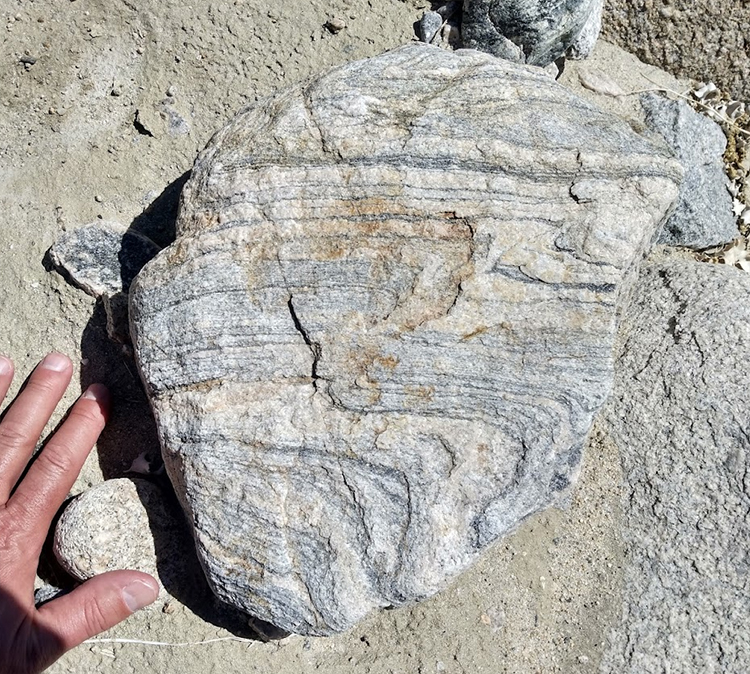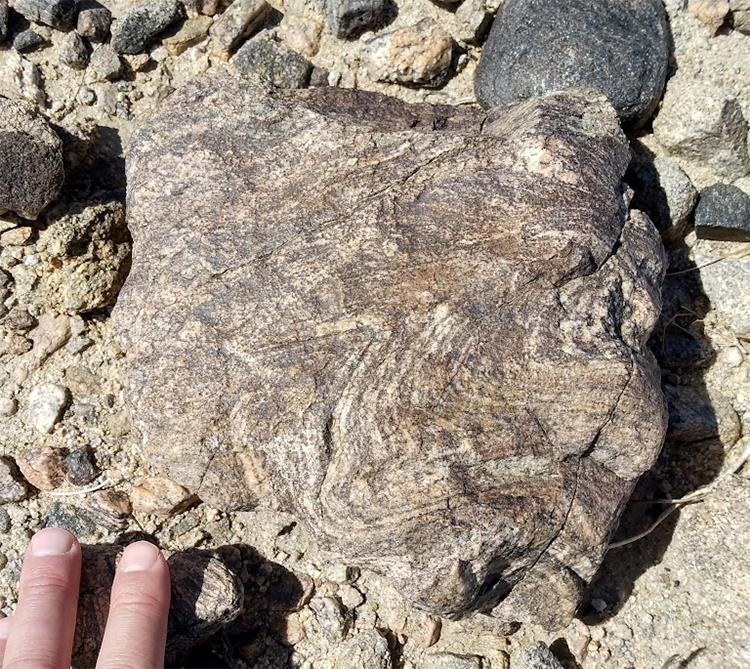Last week, I was lucky enough to visit Pushawalla Canyon in the Indio Hills region of southern California. There, my colleague Kim Blisniuk (San Jose State University) led our students through an exercise mapping alluvial deposits as a way of constraining offsets along the Mission Canyon strand of the San Andreas Fault. I noted that much of the alluvium was sourced to the northeast, to the Little San Bernardino Mountains. Particularly striking to my eye was the Pinto Gneiss, whose foliation is frequently contorted into lovely folds, like this one:

But on older alluvial terraces, desert varnish has accumulated, and the trace of the folded foliation is a bit harder to see:

To me, this comparison/contrast between two similar boulders of gneiss offers a striking visual that qualitatively shows some alluvial deposits to be older, and others fresher. When quantitative methods are applied to constraining the ages of these deposits (10Be exposure ages coupled with U-series soil carbonate ages), rates of offset along the San Andreas can be calculated.
Happy Friday, and Slàinte Mhath!

Crossing paths…
I was reading a paper about the Pinto Mountain fault (I’m at Big Morongo Preserve, on the fault) and it referred to a “strath contact” which I was a new term for me. Google led me to the great explanation on this blog. Then I saw your Pushwalla Cyn post. Was going to mention the alluvium aging article and then saw you already linked it. Some guy in Vg is writing about my back yard! When I saw slàinte (with the Scottish spelling) and knew I’d found a new friend. Been all over Scotland from the borders to John O’Groats to Lewis. So slàinte mhòr! (from the other side of the country).